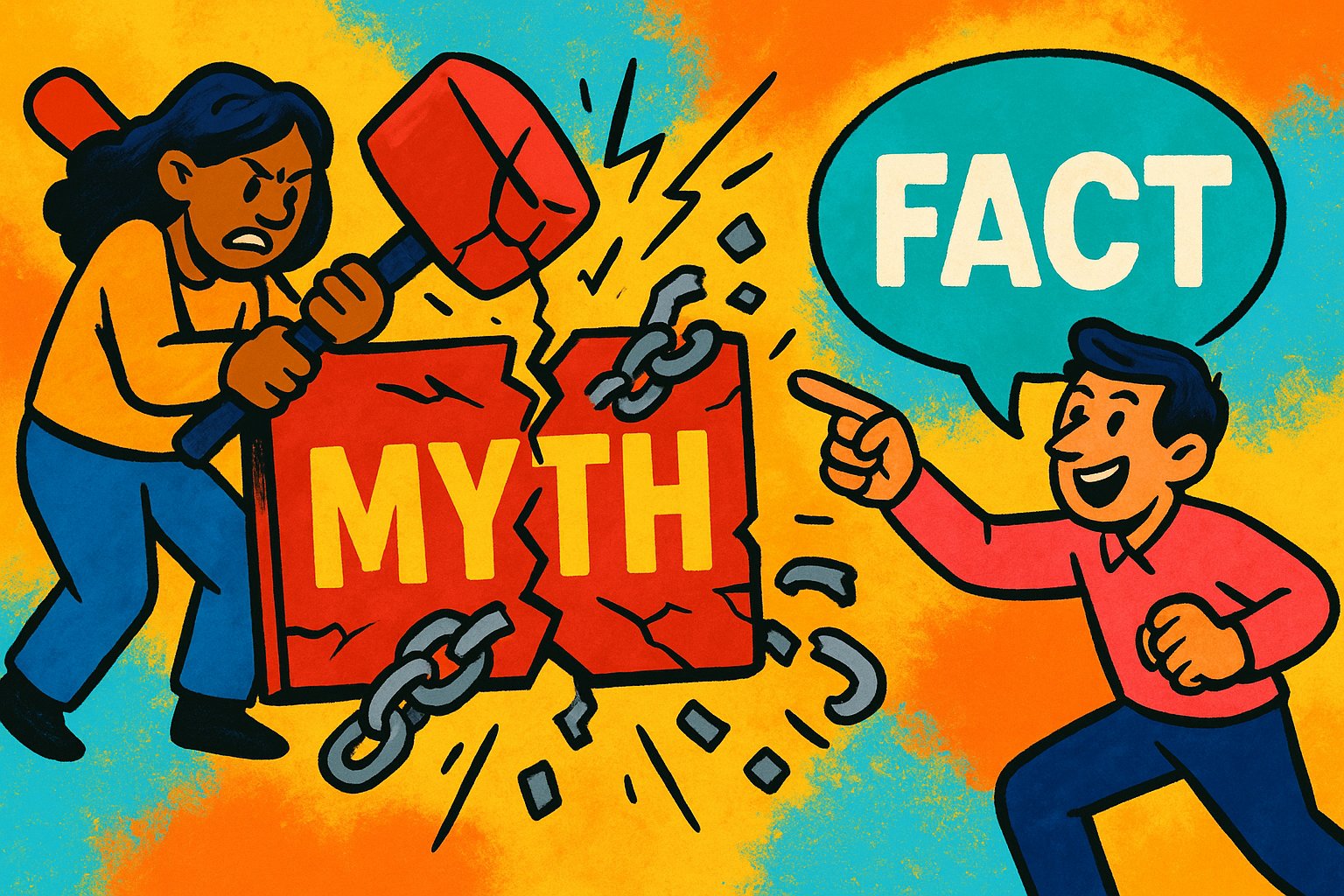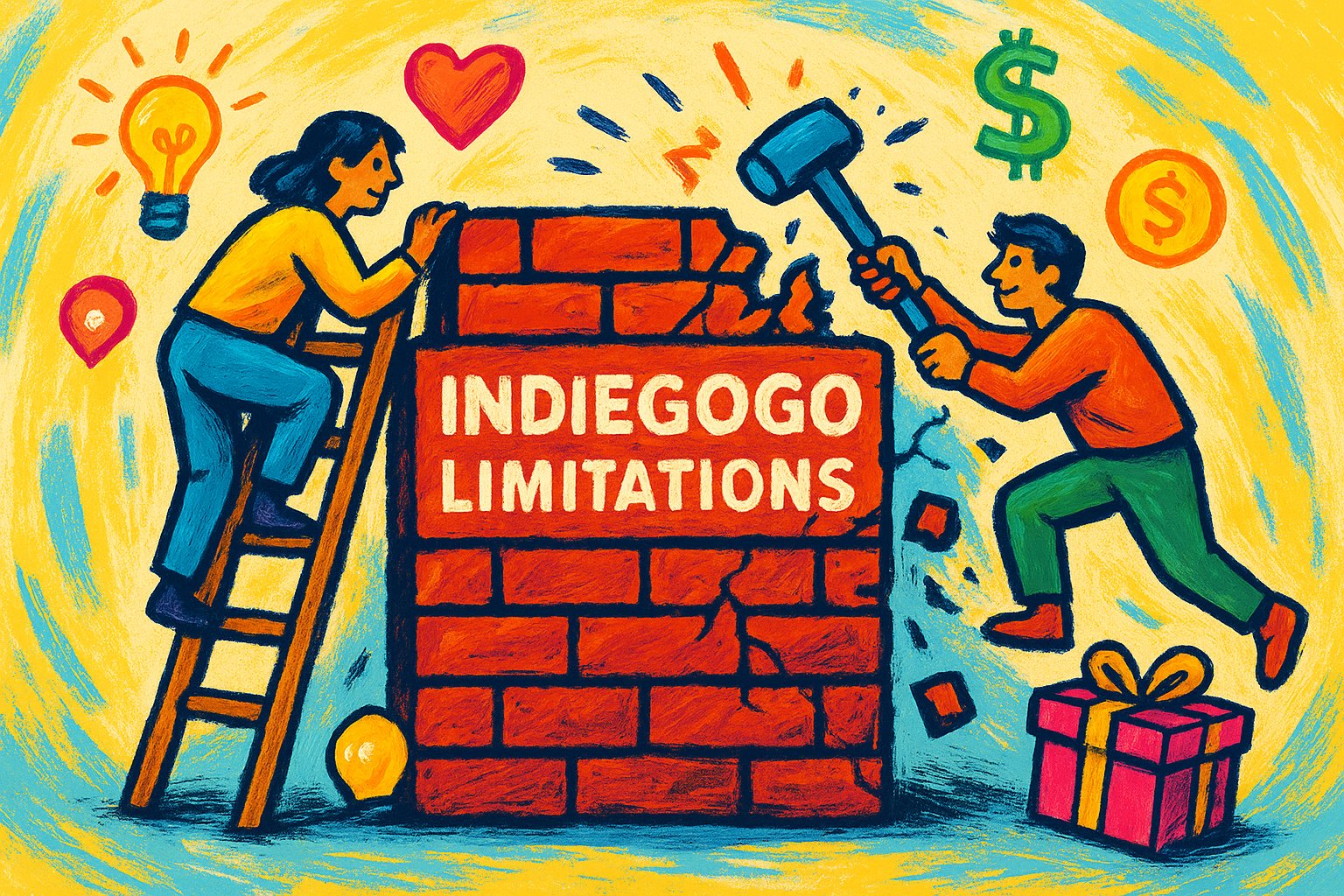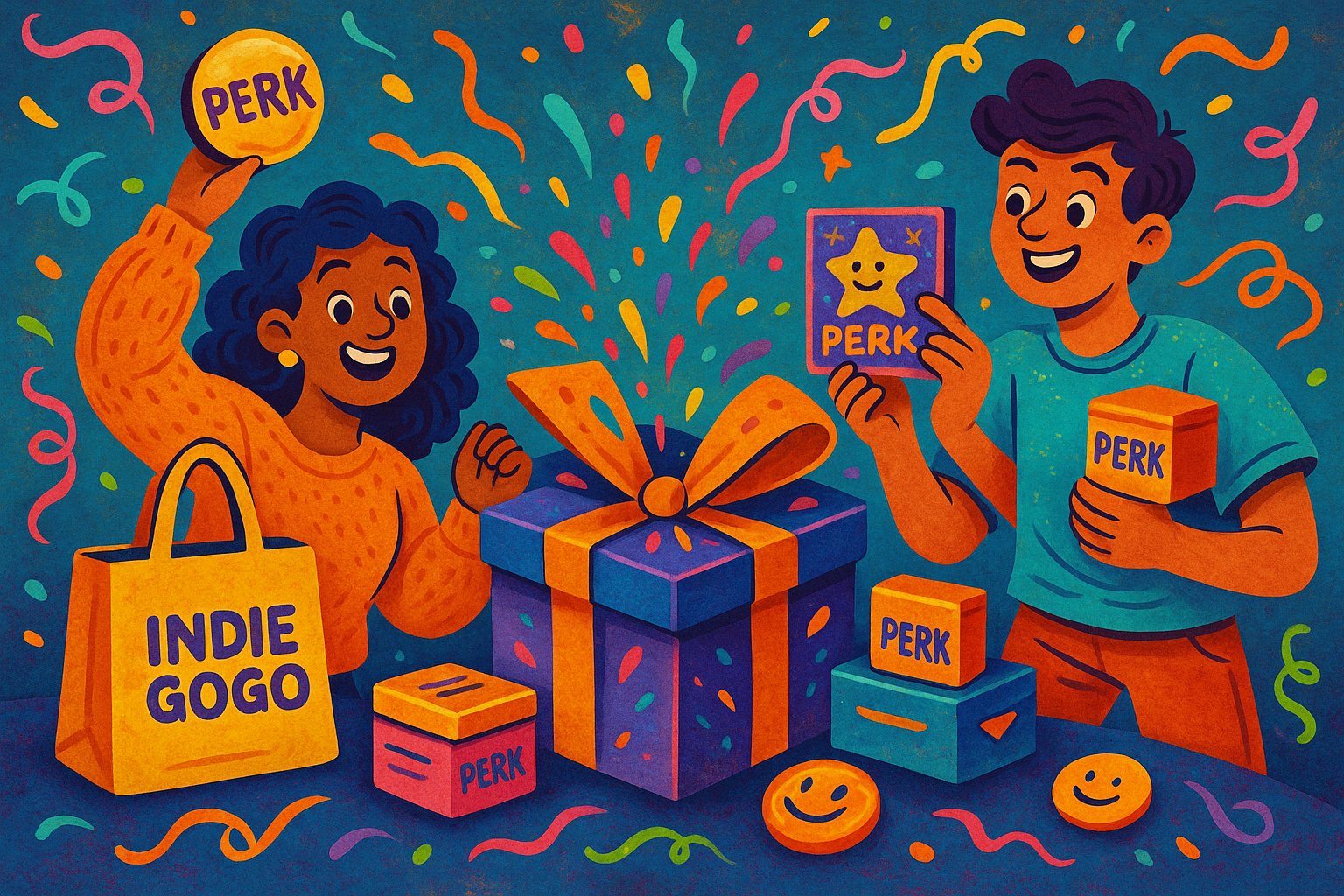Understanding the Truth Behind Kickstarter Triumphs and Trials
Kickstarter has redefined how creators—from solo artisans to full-fledged startups—bring visionary ideas to life. Yet, alongside its transformative power, the platform has become a breeding ground for misconceptions. Aspiring campaigners often worry they need unattainable metrics, while backers sometimes hesitate due to half-truths that swirl around crowdfunding. Separating fact from fiction is essential for both creators and supporters to approach Kickstarter with strategic clarity. In this opening section, we’ll delve into why debunking myths is crucial, how misconceptions can derail worthy projects before they even begin, and what proven tactics lead to tangible momentum. By unraveling these inaccuracies and presenting concrete examples of campaigns that defied expectations, this article equips you—no matter your level of experience—with a realistic framework for success. Whether you’re preparing to launch your first campaign or evaluating a project to pledge, understanding these truths enhances your ability to make data-driven decisions rather than succumbing to anxiety-inducing rumors. Let’s embark on a journey that dispels the fog of crowdfunding myths, paving the way for genuine strategies that translate into Kickstarter’s unique, dynamic ecosystem.
Beyond Tech Exclusivity: Crafting a Universal Narrative
A pervasive myth suggests that Kickstarter is exclusively reserved for tech startups or high-gloss entertainment projects. In reality, the platform hosts a vibrant tapestry of creative endeavors: handcrafted ceramics, experimental art installations, socially driven initiatives, and experimental theater productions. The secret to thriving on Kickstarter is not fitting a pre-defined category, but rather telling a compelling story with authenticity and purpose. For instance, the “Exploding Kittens” card game emerged from a small creative team yet captured global attention by leaning hard into a quirky, irreverent narrative—proving that passion and clarity, rather than budget or category, drive engagement.
Kickstarter’s algorithm favors engagement and momentum over predefined genre labels. This means any project with a clear message, polished presentation, and active community involvement can find its footing. As a creator, the takeaway is that defining a unique value proposition—one that resonates emotionally and demonstrates tangible benefits—matters far more than conforming to an assumed “approved” category. By recognizing this, you can confidently present projects that range from illustrated children’s books to eco-friendly jewelry without worrying that Kickstarter types will automatically dismiss you as “non-tech.” Embrace the platform’s diversity and remember that authenticity always outperforms conformity.
Genuine Engagement Over Vanity Metrics: Email Lists and Community Building
An entrenched misconception insists that you need a gargantuan email list—often tens of thousands of names—before launching a successful Kickstarter campaign. While an engaged mailing list certainly helps amplify early traction, raw subscriber numbers alone rarely predict campaign success. A smaller, highly targeted list of genuinely interested followers can yield higher conversion rates than a thousand loosely related contacts. The key is cultivating genuine engagement: foster conversations, share behind-the-scenes progress, and invite feedback on early prototypes. When subscribers feel like collaborators rather than mere email addresses, they become passionate ambassadors who spread your message organically.
Rather than obsessing over inflated signup counts, focus on community-building activities that deepen relationships. Host live Q&A sessions in niche forums, encourage beta testers to share testimonials, and use personalized messages to convey that each backer matters. Kickstarter itself tracks referral sources: if ten genuinely excited backers share your campaign with their networks, the ripple effect can be far more significant than a mass email blast to a disengaged audience. This truth liberates creators from chasing vanity metrics and refocuses attention on authentic engagement tactics that translate into lasting backer loyalty.
The Myth of the Viral Video: Substance Over Flash
Many creators believe that a viral campaign video is the silver bullet that instantly catapults their project to success. While a viral video can generate an initial surge of traffic, it rarely sustains long-term commitment. Viral moments often attract fleeting attention; casual viewers may pause to watch but will not necessarily convert into backers if your campaign page lacks clarity or compelling incentives. Instead of chasing virality, invest in producing a concise, emotionally resonant video that effectively communicates your mission, highlights the problem you solve, and demonstrates why viewers should back you immediately.
A well-crafted Kickstarter video typically runs under two minutes, focusing on passion and authenticity. It need not feature Hollywood-level production values; genuine enthusiasm and relatable storytelling often outperform overproduced visuals. Complement the video with a meticulously organized campaign page that provides detailed timelines, transparent budget breakdowns, and social proof in the form of testimonials or pilot studies. Together, this holistic approach transforms casual viewers into informed backers who understand precisely what they’re supporting. By prioritizing substance over flash, you ensure that interest translates into meaningful engagement rather than temporary clicks.
Simplicity Triumphs Complexity: Streamlining Your Reward Tiers
Creators frequently assume that the more reward tiers they offer, the more likely they are to accommodate every backer’s taste. However, an overly intricate reward structure can confuse potential backers and hinder conversion. When visitors encounter a labyrinth of options—each with slight variations, international shipping parameters, or convoluted add-on schemes—they may feel overwhelmed and abandon the page altogether. The reality is that simplicity and transparency cultivate trust. Kickstarter campaigns that present a handful of well-defined reward tiers generally outperform those with excessively granular choices.
Aim for a streamlined approach: design an entry-level tier that offers immediate value at a low commitment, a mid-tier option showcasing your core product at a discounted rate, and a premium or limited-edition bundle for those ready to invest heavily. Clearly articulate what each tier includes—product specifications, shipping details, and any additional perks. Avoid vague language that leaves backers guessing. By eliminating confusion, you accelerate decision-making, boost conversion rates, and reduce backer inquiries about unclear options. Remember, backers appreciate simplicity: when they quickly understand what they receive and when, they feel more secure pledging, which directly contributes to a campaign’s momentum.
Crafting Community-Driven Momentum, Not Just Funding Goals
A persistent myth claims that backers care only about seeing a funding bar fill to 100 percent; once that milestone is reached, interest evaporates. In practice, many backers join late in a campaign because they believe in the project’s long-term potential or want to be part of a thriving community. Stretch goals, exclusive updates, and interactive content often entice additional contributions long after the initial goal is met. The successful Kickstarter campaigns understand that backers crave more than a transactional exchange—they desire transparency, collaboration, and a sense of belonging.
By positioning Kickstarter as a two-way dialogue, you cultivate ongoing enthusiasm. Publish regular updates—perhaps a weekly video diary detailing production milestones, or a behind-the-scenes photo series showing prototype refinements. Solicit backer input on design variances, color options, or accessory add-ons through polls. Each interaction reinforces that contributors are co-creators, not passive donors. This community-driven momentum ensures that when stretch goals are announced—such as enhanced features unlocked at 150 percent funding—backers respond with renewed energy rather than drifting away after the initial funding threshold is reached. In short, treat your campaign as an evolving story rather than a single transaction.
Dispelling the “Lonely Crowdfunding” Illusion: Partnerships Amplify Reach
Some creators mistakenly believe that crowdfunding is a solitary endeavor—an uphill battle fought alone against the sea of competitors. In reality, strategic partnerships can amplify reach, boost credibility, and accelerate momentum. Collaborating with complementary brands, online communities, or relevant influencers introduces your campaign to wider audiences who may never discover you otherwise. For instance, if you design premium cycling apparel, a partnership with a well-known cycling blog or an established gear review channel can provide instant access to thousands of engaged enthusiasts.
Seek out partners whose audience aligns with your target demographics. Offer them exclusive previews, affiliate incentives, or co-branded content that provides mutual value. These collaborations can take various forms: a guest article on a popular blog, a joint webinar discussing industry trends, or a co-hosted social media giveaway. By leveraging existing networks, you tap into pockets of interest that might otherwise remain unreachable. This myth-busting insight reveals that crowdfunding does not have to be a lonely endeavor; when done thoughtfully, partnerships become catalysts that multiply impact exponentially.
“One-and-Done” Thinking Versus Iterative Improvement
A common misconception is that running a single Kickstarter campaign—regardless of outcome—either cements your reputation or dooms future endeavors. In reality, many successful creators view crowdfunding as an iterative process. A campaign that achieves just 80 or 90 percent of its funding goal still yields invaluable lessons, community engagement, and a pool of interested followers. These near-success stories present opportunities to gather feedback, refine your message, and relaunch with improved clarity. For example, the smartphone accessory brand “HydraCharge” initially fell short of its goal, but the feedback they received about packaging and color options enabled them to pivot and relaunch three months later, ultimately surpassing their revised funding target by 120 percent.
Beyond relaunching, an underfunded campaign still generates SEO-beneficial backlinks, social proof, and data on which marketing channels convert best. Document every insight—from which headlines performed best to which social platforms drove the most backers—and integrate those learnings into subsequent campaigns. Refuse to view an all-or-nothing outcome as definitive. Instead, treat your Kickstarter efforts as a cycle of testing, iteration, and improvement. This mindset shift transforms perceived “failures” into stepping stones that bolster credibility and optimize your approach for future success.
The Foundational Role of Post-Campaign Fulfillment
It’s alluring to focus exclusively on funding goals, but real success on Kickstarter extends far beyond the campaign’s last day. Even after the final pledge is recorded, the crucial phase of production, logistics, and fulfillment begins. A painful myth asserts that raising funds on Kickstarter guarantees immediate profitability; in truth, many creators underestimate the complexities of manufacturing, quality control, customs clearance, and global shipping. Mismanaging fulfillment can quickly erode backer trust, tarnish your brand, and jeopardize any chance of long-term growth.
To counter this, start preparing for fulfillment well before launch. Partner with experienced manufacturers who understand the challenges of small-batch production and can scale as demand grows. Research international shipping regulations, import duties, and local delivery partners to avoid last-minute surprises. Create a detailed timeline that accounts for prototyping revisions, production runs, packaging, labeling, and distribution. Build contingencies into your budget to cover unexpected cost overruns or logistical delays. By demonstrating meticulous planning and maintaining transparent communication—even if setbacks arise— you validate the faith that backers have placed in your project. Remember: a fulfilled promise transforms backers into lifelong supporters, whereas a delayed or poorly managed process breeds skepticism and negative reviews.
Busting the “Easy Money” Fallacy: Kickstarter as a Holistic Business Accelerator
Many aspiring creators hold onto the illusion that launching on Kickstarter guarantees a cash windfall, fueling dreams of instant success. While crowdfunding can indeed provide essential seed capital, it also demands significant investments of time, resources, and strategic planning. For instance, crafting high-quality prototypes, filming professional videos, and sustaining continuous marketing efforts can quickly deplete budgets long before a single pledge arrives. Moreover, the intense workload of running a campaign—answering backer questions, coordinating manufacturing, and adjusting marketing strategies—often requires assembling a dedicated team or outsourcing specialized tasks.
Rather than viewing Kickstarter as a quick path to cash flow, perceive it as a holistic business accelerator. The platform tests not only market demand but also your project management skills, supply chain viability, and brand-building capabilities. If your goal is to secure capital and validate product-market fit, treat the campaign as a multifaceted launch sequence: prototype validation, community-building, iterative testing, and production scaling. This comprehensive approach ensures that when funds arrive, you have the infrastructure—manufacturing plans, fulfillment pipelines, customer support systems—in place to execute effectively. A well-executed Kickstarter campaign thus becomes more than a fundraiser; it catalyzes your transition from concept to viable business.
Embracing Transparency and Authenticity: The Ultimate Myth Slayer
Perhaps the most pervasive myth of all is that marketing hype and polished façades alone drive Kickstarter success. In reality, transparency and authenticity reign supreme. Backers are far more likely to support creators who address challenges candidly, share behind-the-scenes struggles, and communicate honestly about potential setbacks. When you reveal your prototypes’ imperfections during the development phase, acknowledge hurdles such as supply chain disruptions, and invite your community to brainstorm solutions, you foster an atmosphere of trust. This authenticity galvanizes supporters who feel invested in co-creating solutions rather than merely funding a project.
Featured campaigns like “Pebble Time” illustrate this principle well: the creators regularly posted detailed updates about manufacturing intricacies, quality control tests, and tooling delays. Instead of eroding backer confidence, these candid disclosures garnered empathy and patience, strengthening the communal bond between the project team and its supporters. By embracing transparent communication, you not only humanize your brand but also cultivate a resilient community that stands by you through triumphs and trials. In turn, this authenticity acts as a powerful antidote to rampant skepticism and rumor-fueled fear, ultimately propelling your campaign toward sustainable success.
Championing Facts to Forge Kickstarter Success
Dispelling Kickstarter myths is more than correcting popular fallacies; it’s about empowering creators and backers to engage with the platform strategically and authentically. By recognizing that any creator—regardless of budget or background—can find success, understanding the paramount importance of genuine engagement over large mailing lists, and acknowledging the multifaceted demands of production and fulfillment, you unlock a roadmap for sustainable crowdfunding achievements. Simplify your reward tiers, prioritize transparency, build community-driven momentum, and approach Kickstarter as an iterative growth engine rather than an overnight payday. As you prepare to launch or evaluate campaigns, allow these myth-busting insights to guide your decisions, ensuring your Kickstarter journey is rooted in realistic expectations, transparent communication, and unwavering dedication to quality. Equipped with these truths, you’ll navigate the dynamic world of crowdfunding with confidence, transform backers into ambassadors, and craft your own legacy of successful, impactful campaigns.




